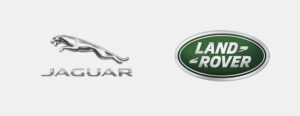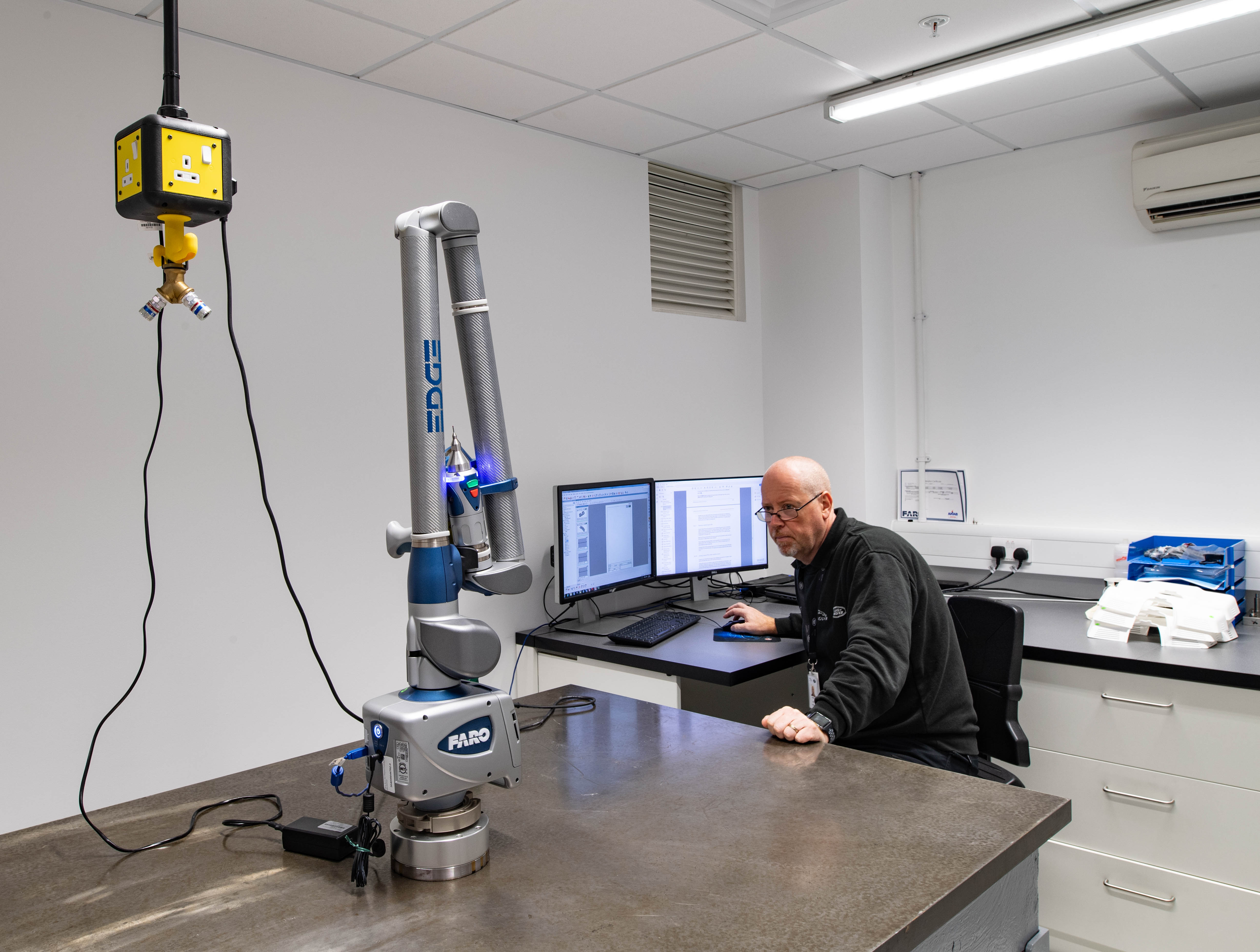 Last October, the XE SV Project 8 became the first production vehicle made by Jaguar Land Rover to include multiple 3D printed parts, with more than a dozen components created at the company’s Additive Manufacturing Centre (AMC) housed at the Gaydon Advanced Product Creation Centre, in the UK, were used. The luxury vehicle brand is one of many automotive companies fiercely adopting the technology to reduce costs and waste during manufacturing processes. For over two decades Jaguar Land Rover has been using additive manufacturing, and the new center is home to one of the largest 3D printing facilities in the country. Their engineers are even going beyond the more traditional uses of 3D printing in automotive by adopting the technology to work on the next generation of protective workplace clothing, for example, they recently came up with a lightweight 3D printed glove which could help better protect employees from the threat of a musculoskeletal disorder, which affects an estimated 20% of the global population, rising to as much as 40% in certain industries.
Last October, the XE SV Project 8 became the first production vehicle made by Jaguar Land Rover to include multiple 3D printed parts, with more than a dozen components created at the company’s Additive Manufacturing Centre (AMC) housed at the Gaydon Advanced Product Creation Centre, in the UK, were used. The luxury vehicle brand is one of many automotive companies fiercely adopting the technology to reduce costs and waste during manufacturing processes. For over two decades Jaguar Land Rover has been using additive manufacturing, and the new center is home to one of the largest 3D printing facilities in the country. Their engineers are even going beyond the more traditional uses of 3D printing in automotive by adopting the technology to work on the next generation of protective workplace clothing, for example, they recently came up with a lightweight 3D printed glove which could help better protect employees from the threat of a musculoskeletal disorder, which affects an estimated 20% of the global population, rising to as much as 40% in certain industries.
3D printing has proven it can deliver many benefits to the automotive industry. Jaguar Land Rover engineers at the Gaydon site revealed to 3DPrint.com that while initially, “the company printed non-functional prototypes, such as design models, AM usage accelerated with associated developments in technology, to functional prototypes and now to the point of using 3D printed parts in production vehicles.”
“There is currently a heavy focus on accuracy and repeatability, in-line with stringent automotive quality standards. The AMC, currently houses 16 industrial 3D printers, across a variety of technologies, namely: selective laser sintering, multijet fusion, stereolithography, continuous liquid interface production and polyjet. The AMC serves all areas of the business, for both the Jaguar and Land Rover brands,” said Christopher Noble, Additive Manufacturing Strategic Engineer at Jaguar Land Rover, to 3DPrint.com.
 Fitted with a 600PS 5.0-liter V8 petrol engine, the Jaguar XE SV Project 8 is being driven by development driver Vincent Radermecker at the fearsome Nürburgring Nordschleife race track, motorsports complex located in the town of Nürburg, Germany. This Special Vehicle Operations’ creation has most of the 3D printed parts hidden from sight, while only a handful can be seen by the owner, such as the plinth for the number plate at the front, and a couple of fins designed to improve the aerodynamics. The team’s greatest addition was inside. Those opting for the ‘Track Edition’ version would find the rear seats stripped out and a roll cage and racing harnesses added. It is where the harnesses meet the seat that gave the Additive Manufacturing team a chance to shine, with the creation of a bespoke bezel on the racing bucket seats.
Fitted with a 600PS 5.0-liter V8 petrol engine, the Jaguar XE SV Project 8 is being driven by development driver Vincent Radermecker at the fearsome Nürburgring Nordschleife race track, motorsports complex located in the town of Nürburg, Germany. This Special Vehicle Operations’ creation has most of the 3D printed parts hidden from sight, while only a handful can be seen by the owner, such as the plinth for the number plate at the front, and a couple of fins designed to improve the aerodynamics. The team’s greatest addition was inside. Those opting for the ‘Track Edition’ version would find the rear seats stripped out and a roll cage and racing harnesses added. It is where the harnesses meet the seat that gave the Additive Manufacturing team a chance to shine, with the creation of a bespoke bezel on the racing bucket seats.
The part has some overhangs and details that engineers decided would be too complex to manufacture using traditional methods. So using HP’s Multi Jet Fusion 3D printing technology, the team created identical seat bezels as the engineers had designed, and put them through the same stringent testing as any other part would endure.
With a little help from the Model Design Shop, the team soon had a quality finished part befitting the £150,000 super saloon. The quality of the 3D printed part was so well received, that the team was commissioned to create a few more for the XE SV Project 8, including a blank to cover where a traditional seatbelt would be, and bespoke mounting brackets for the car’s parking distance sensors.
“The limited-run Jaguar XE SV Project 8 was an ideal vehicle for AM. Leveraging AM eliminated tooling costs in lower volume vehicles, while also allowing for many unique parts on the car to deliver maximum performance. The elimination of tooling gives greater geometric freedom, as well as avoiding tooling costs and inventory. In product development, the technology grants multiple, quicker iterations of design, without early commitment to hard tooling. In the future, more localized production could become prevalent to reduce logistics, with AM seeing increased usage for spare and aftermarket parts,” explained Noble. “High piece cost is a limiting factor for higher production volumes, but we expect this to reduce as companies focus more on material supply and pricing, leaving room for increased adoption of AM.”
Currently the AMC is a only polymer facility, however, Jaguar Land Rover has strong links with a number of metal additive suppliers and researchers, and is actively working on metal additive projects for adoption in future vehicles.
“There are 15 engineers working at the AMC across a variety of roles, including scheduling the production of over 80,000 3D printed parts every year. This includes prototype parts, parts for our manufacturing sites and parts for production vehicles. The team is responsible for delivering the AM strategy of the business, which includes the characterisation of new technologies, as well as educating the wider company on 3D printing. Each day brings a new set of challenges, with the opportunity to work on several exciting and innovative projects.”
Noble, along with his colleagues Freddie Raven, Additive Manufacturing Strategic Engineer, and Ben Wilson, AM and Prototype Design Manager, is currently engaged with multiple projects across different areas of the business and expect to see continued growth in AM applications, even for more mainstream adoption in personalizing vehicles, as it can simplify the process.
“Our customers demand the highest quality from our vehicles and the unique benefits 3D printing offers can be used to deliver a superior product. AM is ultimately another tool in the box to deliver experiences our customers love for life,” went on the expert.
[Image credit: Jaguar Land Rover]“There is a strategy in place to deliver 3D printed parts into our manufacturing processes. The AM team has delivered a number of projects in collaboration with our manufacturing colleagues, such as jigs, fixtures and manufacturing aids, a notable example of which was the prototype 3D printed glove designed to reduce musculoskeletal disorders. 3D printing is aligned with the business strategies of Destination Zero and ACES (Autonomous, Connected, Electrified and Shared) vehicles, with a reduction in waste and freedom of design enabling benefits such as light-weighting. We expect wider adoption in future projects as the AM industry continues to advance and becomes more accessible for commercial higher-volume vehicles,” he concluded.
Join the discussion of this and other 3D printing topics at 3DPrintBoard.com.
Subscribe to Our Email Newsletter
Stay up-to-date on all the latest news from the 3D printing industry and receive information and offers from third party vendors.
You May Also Like
3D Printing News Unpeeled: A $3000 SLS System, Construction Subsidies and Parameters
The Housing Affordability Crisis is one of Canadian President Trudeau’s biggest issues. Now the government has made subsidies available, including scaling new technologies, 3D printed housing and libraries of reapproved...
“Bundled Light” Enables High Quality Plastic 3D Printing from LEAM
Naturally, we expect current 3D printing methods to continuously improve, but it continues to do so in the most surprising ways. The latest development comes from LEAM, a startup spun...
Each to Their Own: Exploring Creality’s Latest Ender Trio as the Company Strengthens Its Commitment to 3D Printing Advocacy
Creality has reaffirmed its commitment to promoting 3D printing. The launch of the Ender-3 V3 SE, Ender-3 V3 KE, and Ender-3 V3 showcases the company’s dedication to catering to diverse...
3D Printing News Briefs, March 23, 2024: AM in the US Coast Guard, Navy, & More
In today’s 3D Printing News Briefs, we’re discussing the use of 3D printing in various branches of the military, including the U.S. Coast Guard, the U.S. Navy, and the German...

































